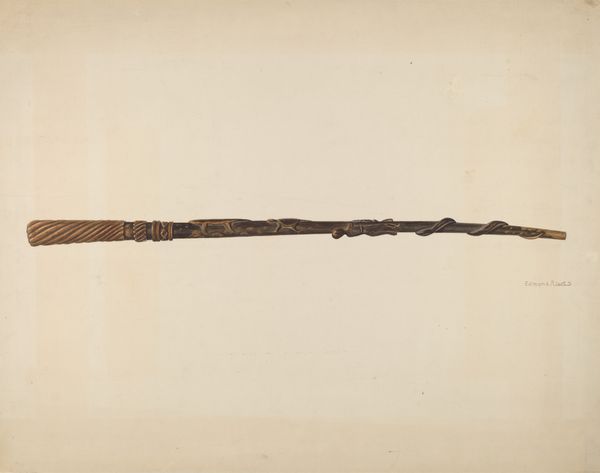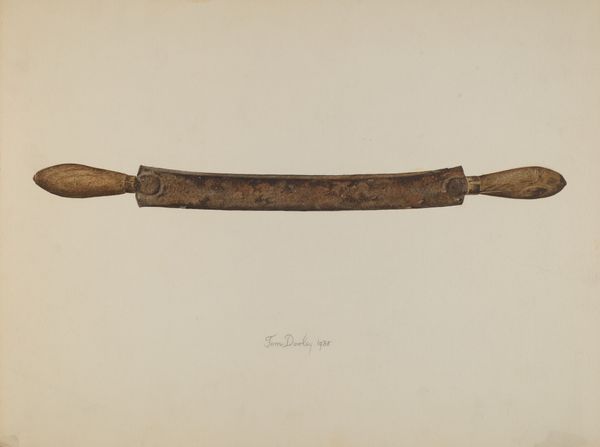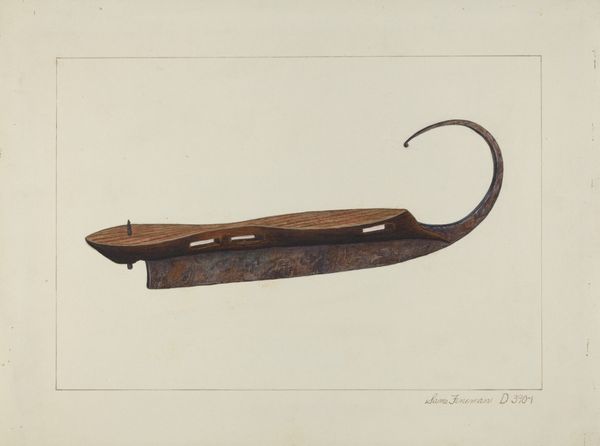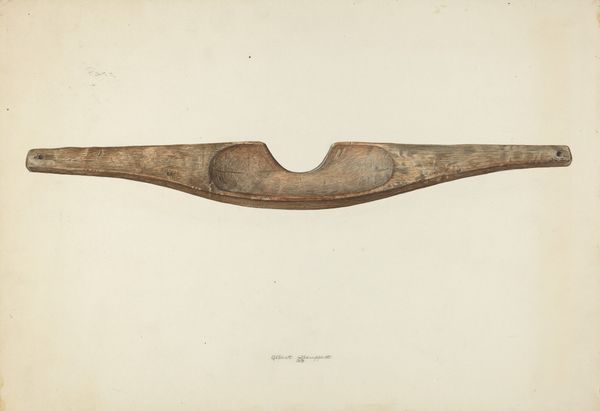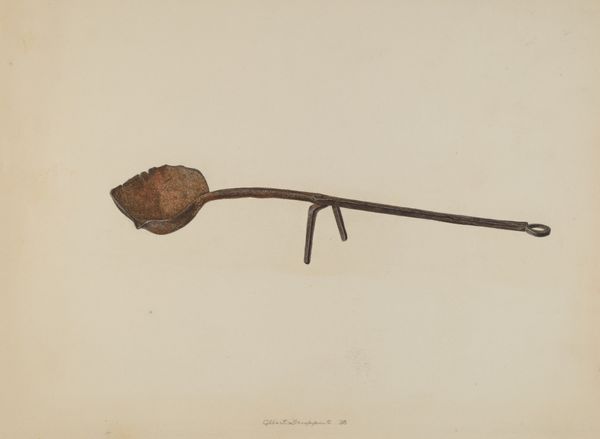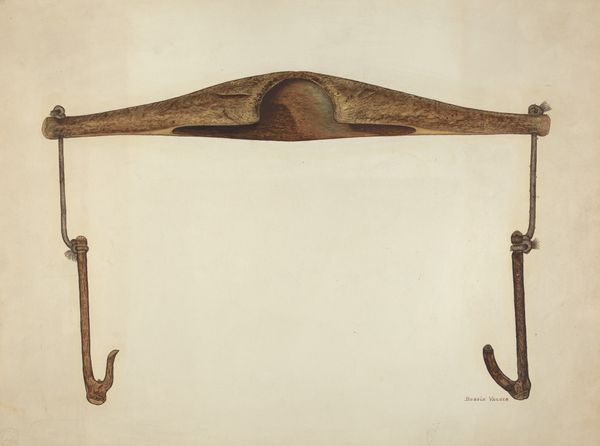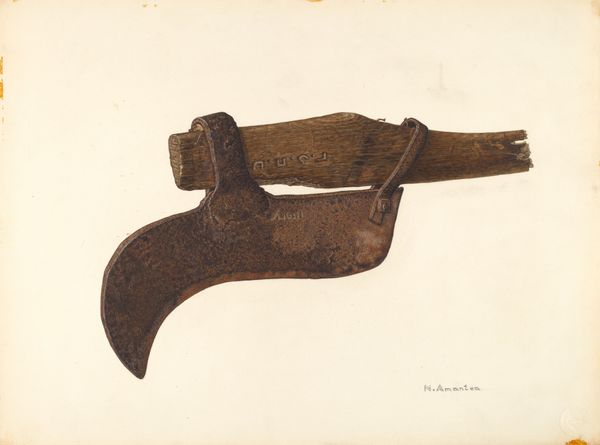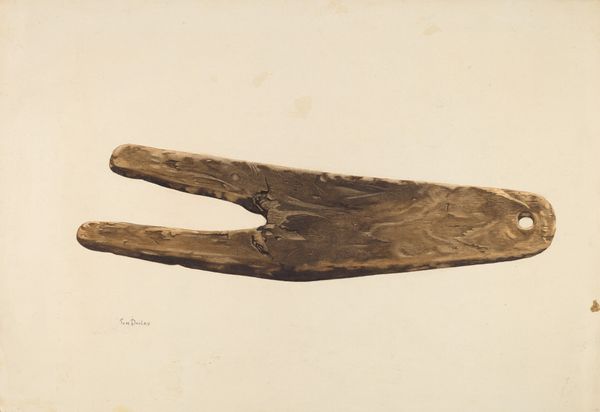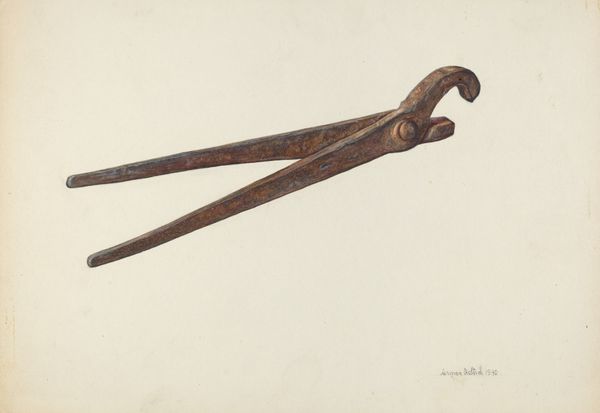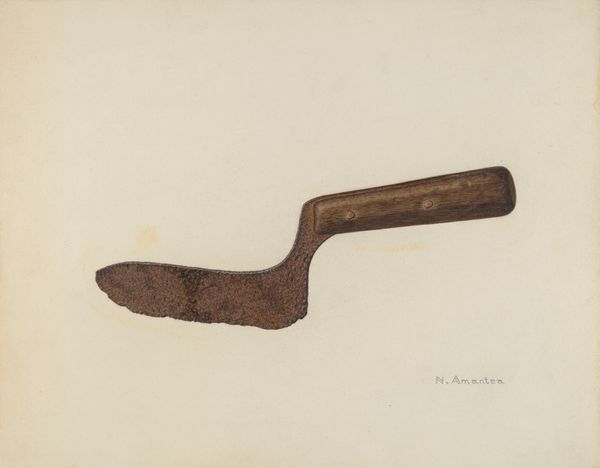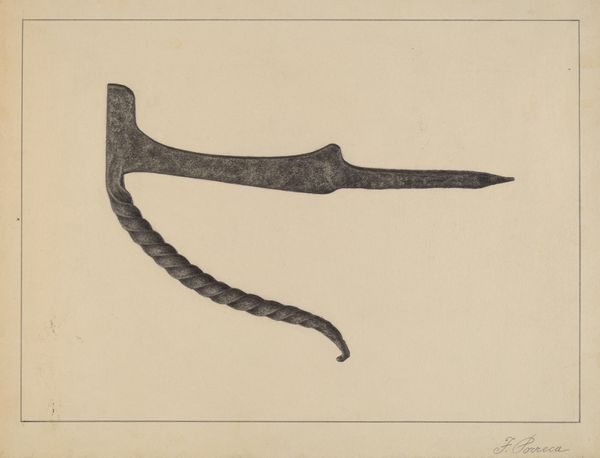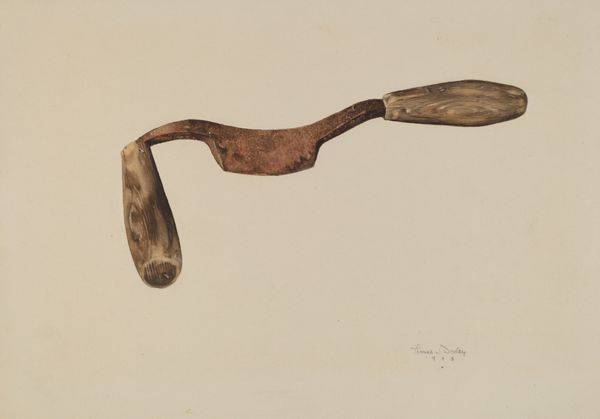
drawing, paper, watercolor
#
drawing
#
charcoal drawing
#
paper
#
watercolor
#
pencil drawing
#
watercolour illustration
#
realism
Dimensions: overall: 30.7 x 50.8 cm (12 1/16 x 20 in.)
Copyright: National Gallery of Art: CC0 1.0
Editor: Here we have Harold Ballerd’s "Knife," created around 1939 using watercolor and pencil on paper. It's a simple, almost clinical depiction of what looks like an old, serrated knife. There’s a certain starkness to it that feels a bit unsettling. What strikes you most about this drawing? Curator: The unsettling feeling is understandable. Looking at it, I’m struck by its latent potential for violence, contrasted with its stillness as an object depicted on paper. Consider the era: 1939, on the cusp of global conflict. Is this knife simply an object, or a symbol laden with social anxieties about power, aggression, and control, particularly within patriarchal structures? Does the rust signify decay, or the cyclical nature of conflict? Editor: That's a perspective I hadn't considered. So, the choice of subject and medium might be making a statement about societal anxieties of the time? Curator: Precisely. Watercolors often evoke delicacy, contrasting sharply with the harshness of a weapon. Think about who traditionally uses these tools, and how the image either aligns with or subverts such expectations. The representation can reinforce or question conventional roles and the power dynamics implied within them. Who wields the knife? Against whom or what? Those are some initial questions that arise for me. Editor: It makes you think about who might have possessed this knife and what purpose it served in their lives. Curator: Exactly! And further, it pushes us to think about the power inherent in objects, particularly those associated with violence, and how these objects reflect broader societal attitudes and historical contexts. Ballerd invites a discussion on the role of power, gender, and societal anxieties prevalent in his time. Editor: Thank you! I see it now as more than just a simple depiction of a tool; it's a mirror reflecting complex social narratives. Curator: And that's what makes art so powerful—its ability to provoke dialogue and uncover hidden histories.
Comments
No comments
Be the first to comment and join the conversation on the ultimate creative platform.
